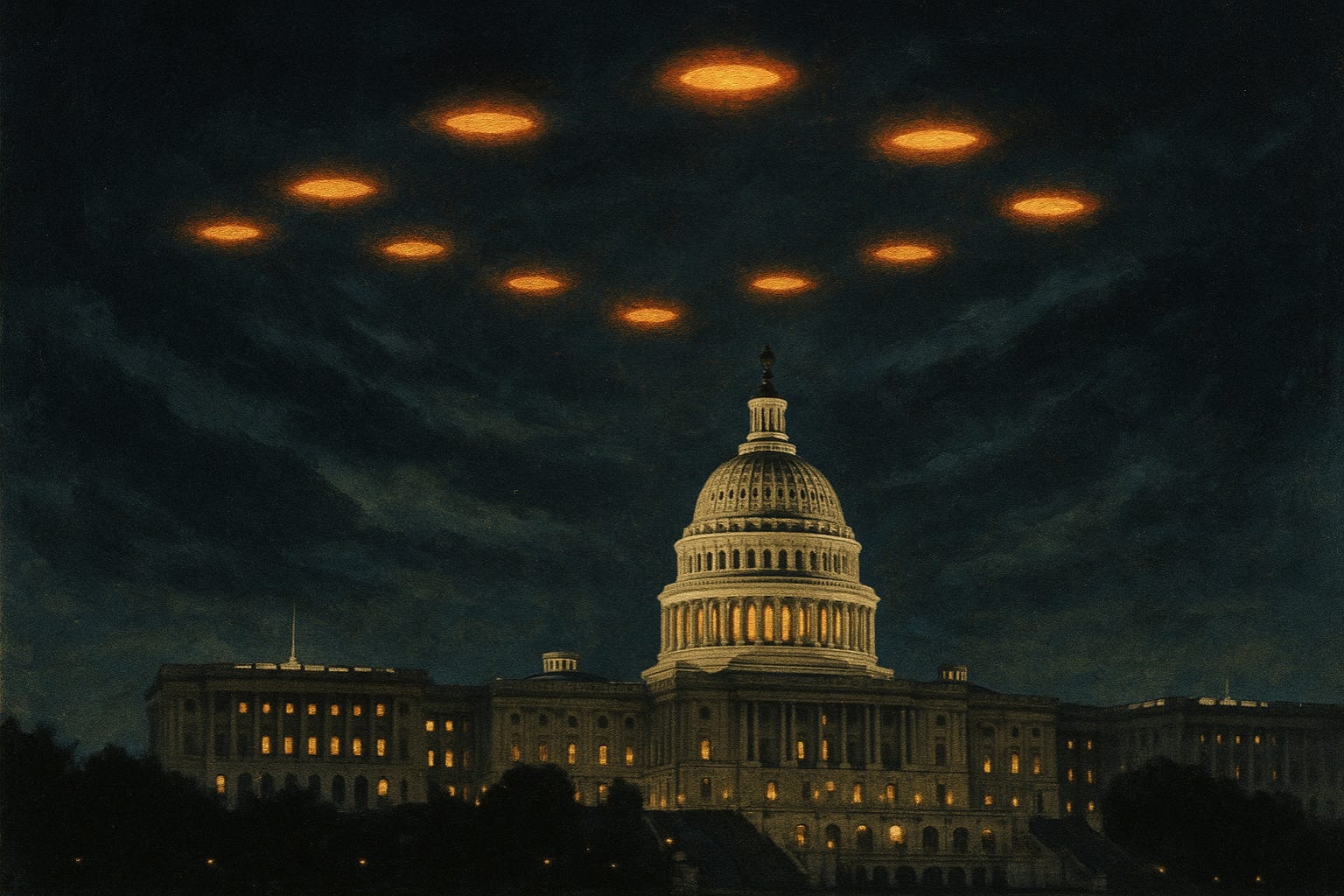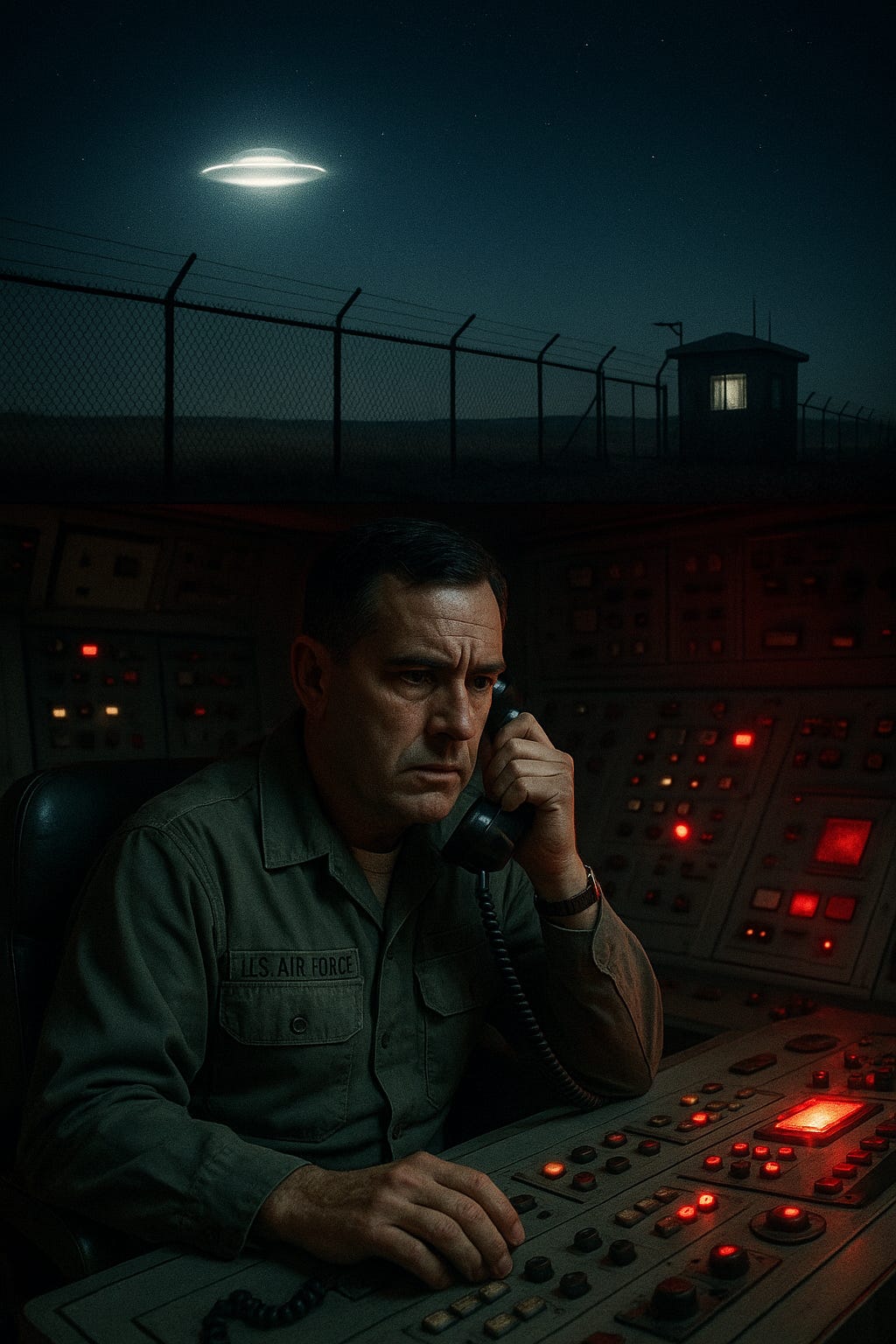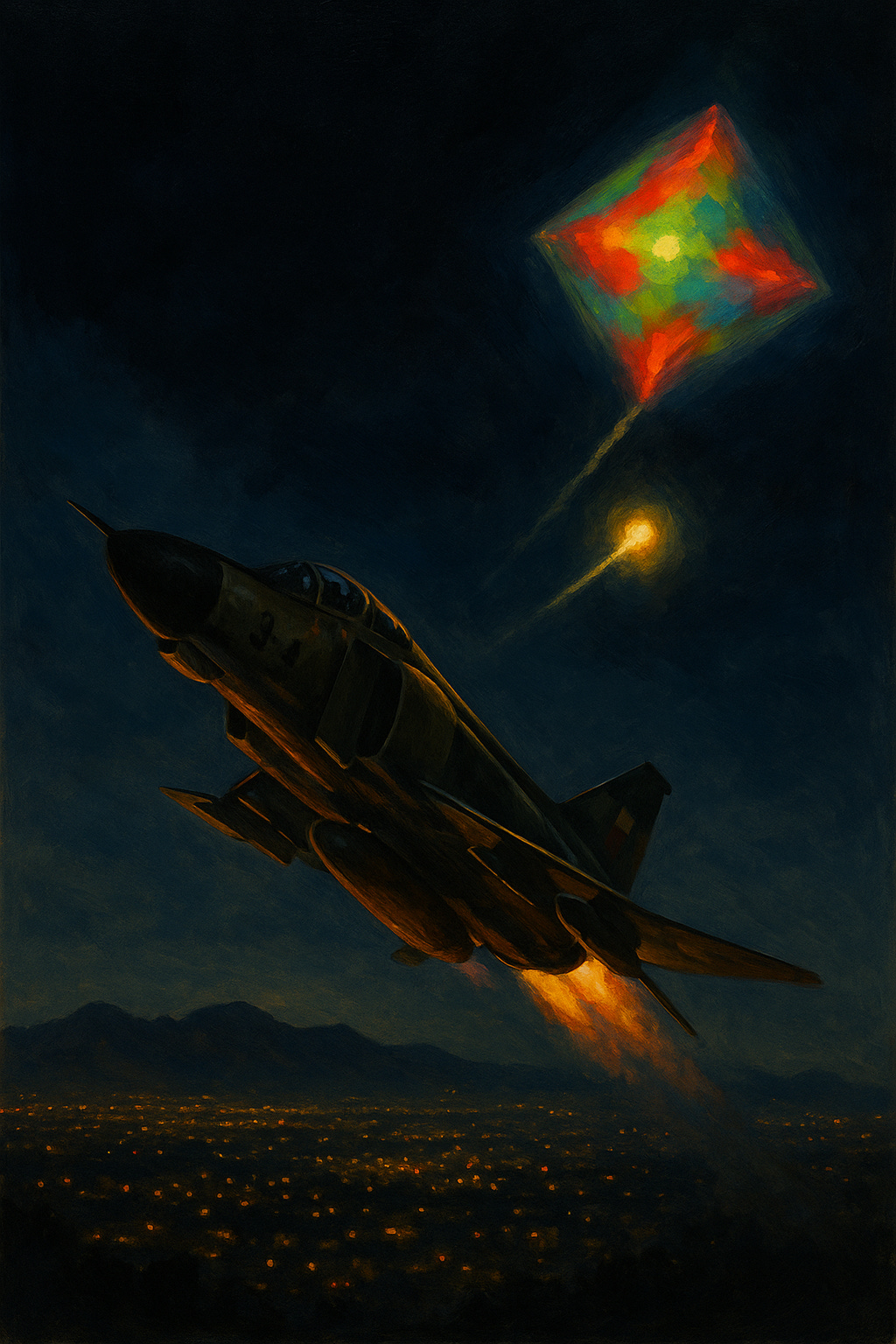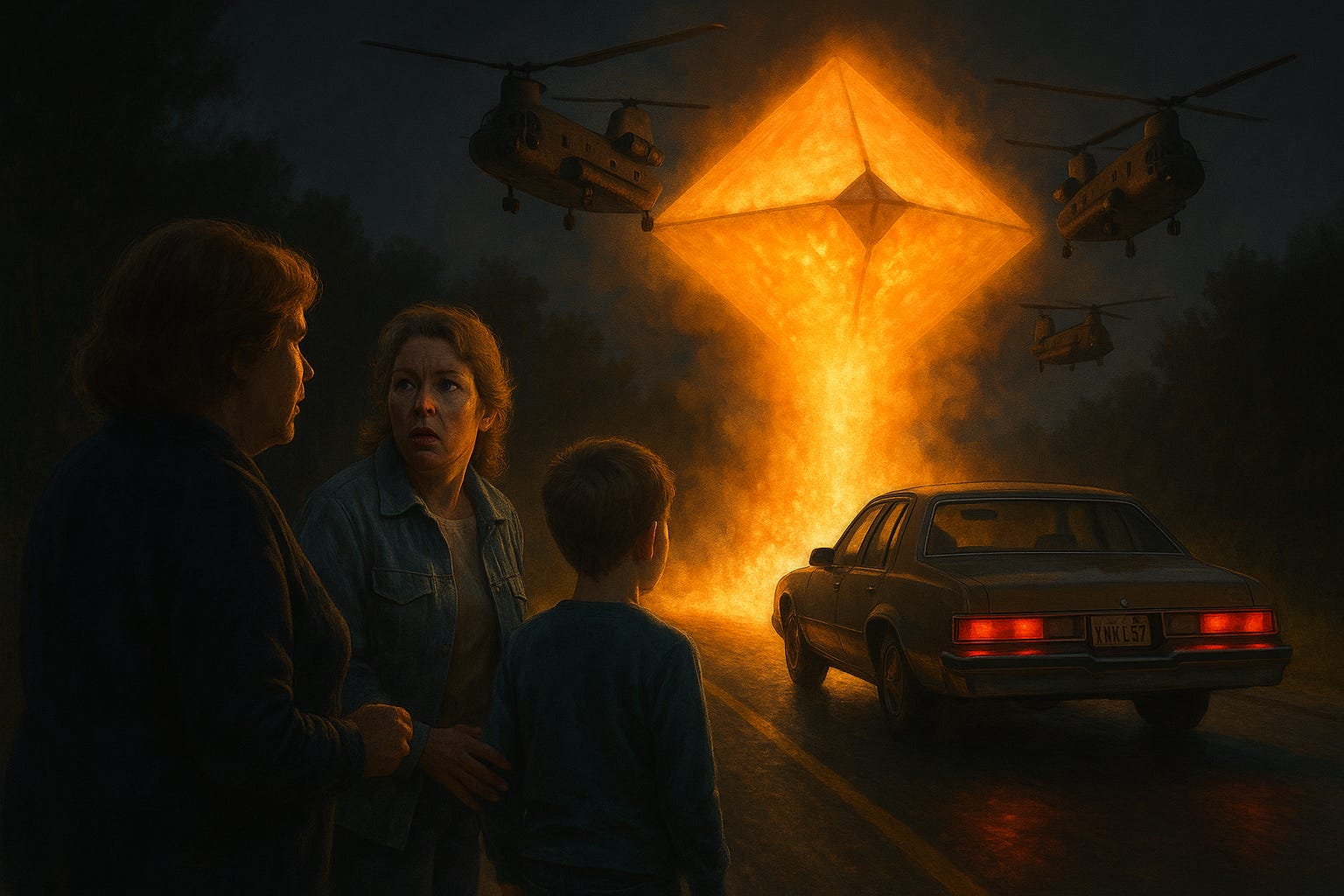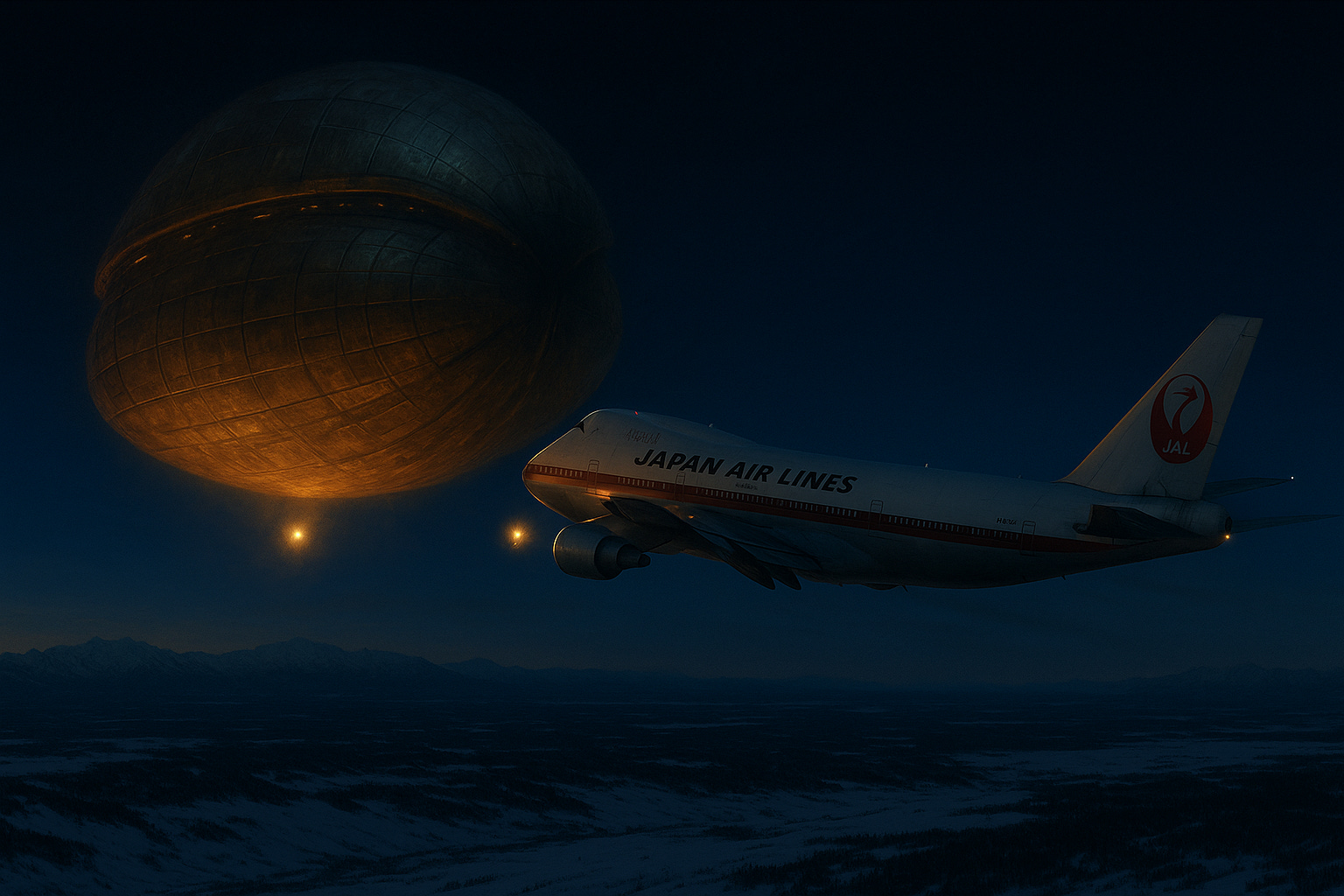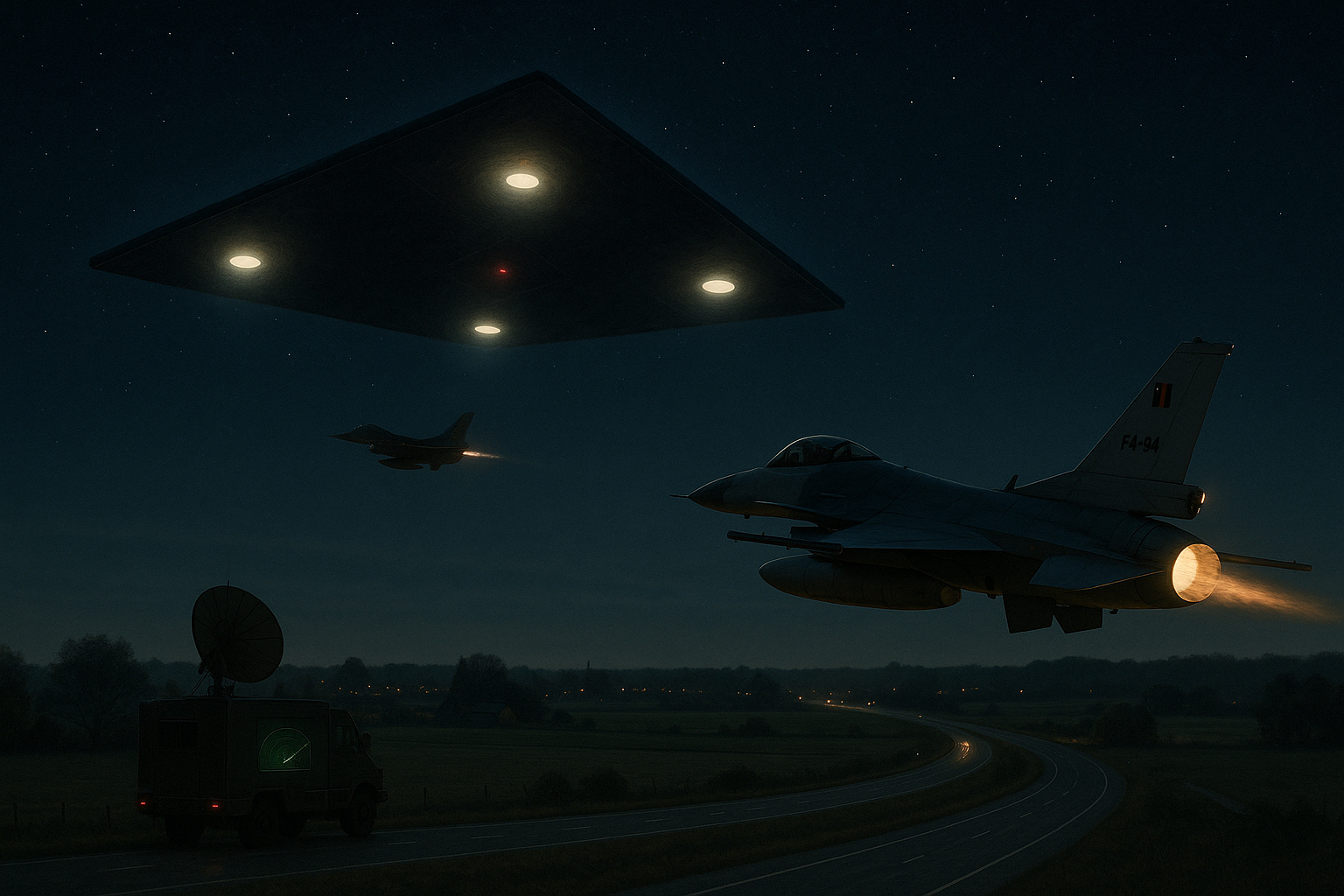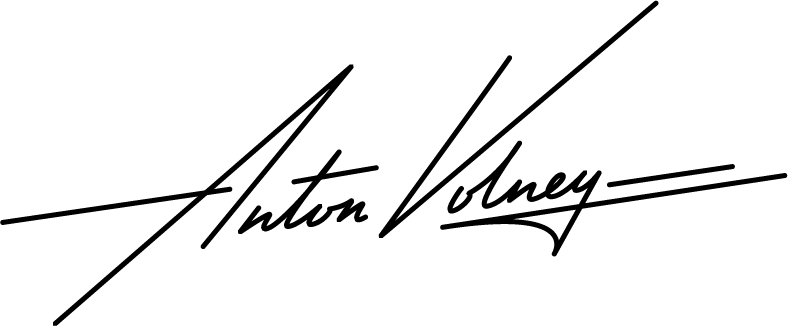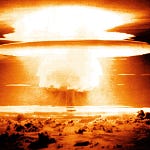Editor’s Note – Confidential Briefing
Permission to Be Powerful: Intelligence Bulletin #001
This is not a typical post.
What you’re about to read is the result of months of research into declassified military encounters, leaked eyewitness testimony, and forgotten historical records.
These cases have been downplayed, distorted, or buried entirely — not because they aren’t credible, but because they are.
Each incident featured here was witnessed by fighter pilots, nuclear technicians, air traffic controllers, or civilian professionals with nothing to gain and everything to lose by speaking out.
This isn’t about aliens. It’s about power.
About how governments use secrecy as a currency.
How your perception of reality can be managed like a PR campaign.
And what happens when people start remembering what they saw — and saying it out loud.
If you’ve ever felt that something isn’t adding up…
That you’re being given just enough truth to keep you calm —
but not enough to make you powerful —
This report is for you.
—Anton
Dancer. Writer. Buddhist.
Publisher of Permission to be Powerful
Dear Permission to be Powerful Reader,
Four astonished witnesses gaze up as a glowing craft hovers silently above…
Bathing the night in an unearthly light.
I’ve spent months sifting through declassified files, eyewitness tapes, and whispered testimonies.
A raw, cinematic journey through UFO encounters emerged that defy easy explanation.
This isn’t about the famous incidents you’ve heard a hundred times – no Roswell, no Phoenix Lights, no Nimitz Tic-Tac.
These are new cases, each a chapter in a hidden history.
I invite you to step into the darkness with me.
To feel the skepticism…
And the wonder…
As we explore these mysteries.
1952 – Lights Over Washington
A humid night over Washington, D.C. in July 1952.
Inside a dimly lit radar room at National Airport, an air traffic controller freezes. Seven blips have materialized on his scope where no plane should be1.
He calls it a joke about a “fleet of flying saucers,” but no one’s laughing across the Potomac at Andrews Air Force Base.
Another radar screen comes alive with unknown targets zipping at 7,000 mph.
Out the window, an orange ball of fire streaks across the sky
Sirens wail as two Air Force jets scramble into the starry night, afterimages of bright lights dancing over the Capitol dome.
On the ground, people step out of late-night diners and cars, pointing upward. Silent discs of light dart and stop in ways no human aircraft can.
Each time the F-94 interceptors close in, the objects vanish from radar; the frustrated pilots only catch glimpses of glowing orbs that easily outrun them.
The nation’s capital is a stage for two weekends for this cat-and-mouse chase. Imagine the scene:
The White House is under an invisible siege, radar operators sweating through their uniforms, and fighter pilots yelling, “Bogey locked at noon… wait, it’s gone!” into their radios.
With the press in a frenzy, the U.S. Air Force takes the unprecedented step of holding the largest Pentagon press conference since WWII.
Major General John Samford, the Air Force’s intelligence director, faces the flashbulbs.
He carefully acknowledges that “credible observers” have reported “relatively incredible things,” but assures the public that none poses a threat.
Under the harsh lights, Samford floats a theory:
“Maybe the radar pings were caused by a temperature inversion – layers of warm air fooling the radar”.
Perhaps those miraculous lights were just stars or meteors misidentified.
It feels like watching someone try to put a lid on a boiling pot. Skeptical reporters press for details.
Samford concedes fighter jets have chased many such radar ghosts in the past—“hundreds” of intercepts, all fruitless5. The message is clear: There is nothing to see here, folks.
Behind closed doors, however, the military was rattled.
Secret memos show the Air Force and even the CIA took the “Washington Flap” seriously.
They feared the sheer volume of sightings that summer – what if enemies could exploit this UFO panic during the Cold War? But to the public, officials insisted it was business as usual.
Trust us, we’ve got it under control.
For a moment, the most powerful government on Earth was confronted with unknown intruders in its most restricted skies – and could do nothing but watch.
However, the power dynamic shifted briefly: who was in control that night?
The answer died in that press room, under a haze of scientific-sounding reassurances and forced smiles.
1967 – Malmstrom’s Mystery Shutdown
Scene: A remote Montana prairie before dawn, 1967. Deep underground in a concrete capsule, Air Force officer Robert Salas sits eighty feet below the surface at Malmstrom AFB, monitoring a row of Minuteman nuclear missiles.
It’s the height of the Cold War, and these ICBMs are the nation’s most powerful weapons – doomsday devices on hair-trigger.
Above, the night is clear and still.
Suddenly, a security guard’s voice crackles over the phone line, panicked:
“Sir, there’s… something hovering at the front gate!”
Salas grips the railing.
Ten nukes, taken out in an instant.
If this were an attack, it would be an act of war – yet there was no explosion, no demand, only eerie silence. Technicians swarm the silos by daylight, scrutinizing every circuit.
The official finding is that there is no sign of sabotage or mechanical failure; an undefined electrical disturbance might be to blame.
In truth, they are baffled. One engineer remarks that the odds of all these separate systems failing at once by chance are practically zero.
Word of the incident is hushed up.
Salas and his team are forced to sign NDAs under threat of prison – this event is top secret.
For decades, nothing leaks.
Only in the 1990s does Salas, now retired, come forward; by then, he’s furious. He reveals that his site and another flight of missiles a week earlier had also been mysteriously shut down.
In total, as many as 30 nuclear missiles were disabled during UFO encounters in that period.
Another officer on duty, Col. Frederick Meiwald, has corroborated Salas’s account, lending further credibility.
When this story finally hit the press, the Air Force shrugged it off. No official admission ever came that a UFO turned off our nukes.
Internally, declassified documents from the 341st Missile Wing show the brass took it seriously – they quietly catalogued the “rumors of UFOs” around the base during the outage.
But in public? Total denial. The incident was never formally investigated outside closed doors. An unknown presence rendered the most powerful weapons on Earth useless, and we weren’t even allowed to talk about them.
Salas believes it was a message – perhaps a warning about playing with nuclear fire.
“UFOs were being seen over nuclear weapons bases... shining a light on the fact that we have these weapons,” he said, calling it “ridiculous that we have these [nukes]” at all.
Whoever or whatever was behind that glowing orb had the power to reach into the core of our nuclear arsenal and flip the off-switch.
In that moment, all our atomic might meant nothing.
Powerlessness – that’s what Robert Salas felt in that bunker, hearing the alarms blare as the impossible unfolded.
The government’s response was to smother the incident in secrecy, as if by refusing to “officially” acknowledge it, they could pretend humans still held all the power.
1976 – A Dogfight Over Tehran
It’s after midnight on September 19, 1976, in Tehran, Iran.
The city lights twinkle below as Iranian Air Force Captain Parviz Jafari thunders into the sky in his F-4 Phantom jet.
Moments earlier, residents had flooded police lines with reports of a bright object zooming across the stars.
Another F-4 was scrambled first, but as it got close to the UFO, its electronics mysteriously failed, forcing it back to base.
Now Jafari, a squadron leader, is the second man up, hurtling toward a brilliant multicolored light hanging over the suburbs.
High above Tehran, Jafari’s radar locks onto the object – it’s as big as a KC-135 tanker, he later recalls, absolutely enormous.
He can physically see it now: a diamond-shaped craft flashing intense red, green, orange, and blue lights, so bright he can’t discern a solid form behind them.
Adrenaline surges; he’s an experienced Top Gun pilot, but he’s startled – this is unlike any aircraft he’s ever seen.
Ground control authorizes weapons free.
Jafari’s finger hovers over the trigger to launch a Sidewinder missile... and that’s when the UFO strikes first.
From the object, a smaller luminous orb suddenly shoots straight toward Jafari’s jet at incredible speed.
Instinctively, he thumbs the missile fire button. Nothing happens. His weapons control panel is dead; his missile system has been jammed.
In fact, every instrument in his cockpit goes haywire—his radio, his targeting radar, and even his throttle responsiveness.
The Phantom is now flying blind.
Jafari breaks off the attack, frantically evasive, as the glowing orb stops and silently returns to the main craft. Regaining some control as he puts distance between himself and the UFO, Jafari is shaken but alive.
Then, before he can breathe a sigh of relief, the huge craft does something extraordinary.
It deploys another object, which Jafari watches drop straight downward to Earth. A smaller craft emits a bright light as it descends.
Expecting a massive explosion on the city's outskirts, he’s astonished when the object lands gently instead, still glowing. It bathes the ground in light, as if conducting some inscrutable mission.
Jafari’s fuel is low; he’s ordered back.
When a helicopter team searches the landing site at dawn, nothing is found – only local villagers who heard a loud noise and saw a flash at night.
This encounter reads like science fiction but was officially documented in a U.S. Defense Intelligence Agency report soon after.
A four-page DIA memo detailing the Tehran dogfight was distributed to the White House, NSA, CIA, and Pentagon, highlighting how seriously this was taken at the highest levels.
The report listed a laundry list of astonishing details: multiple radar confirmations, visual sightings by two pilots and ground witnesses, and the complete failure of multiple avionics on the jets whenever they approached the UFO.
It noted that one pilot’s weapons system went offline at the moment of engagement, exactly as Jafari testified.
In short, this was one of the most well-documented military UFO encounters on record, and U.S. intelligence was well aware of it.
Publicly, of course, the incident was barely acknowledged in America.
Years later, skeptics tried to downplay it, claiming the pilots just chased Jupiter or a star, and that Jafari’s jet happened to malfunction on its own.
A famous debunker, Philip Klass, argued that one Phantom was already notorious for electrical issues.
Maybe, he said, it was all a string of coincidences and misperceptions.
But that doesn’t square with the Iranian radar tracking or the accounts of seasoned airmen describing a structured craft with intentional behavior.
Jafari, who went on to become a general, never backed down.
Decades later, he insisted that what he saw was “not from Earth,” recounting how “Suddenly, nothing was working. The UFO had shut us down”.
The Iranian generals had no answers. They knew it wasn’t American or Soviet – no human craft then (or now) could perform like this: disabling interceptors at will and outrunning missiles.
In a rare East-meets-West moment, Iran even passed the report to U.S. officials, effectively throwing up their hands.
Powerless to control their skies that night, the Iranian Air Force could only document the intrusion by a superior technology.
The event remains unexplained, a testament to the uneasy feeling militaries have when they encounter something more advanced than they are.
Over Tehran, the balance of power tilted – jets, missiles, bravado, all made irrelevant by one shimmering unknown.
1980 – The Cash-Landrum Incident
A lonely county road near Dayton, Texas, Dec. 29, 1980.
It’s a little past 9 PM as Betty Cash, Vickie Landrum, and Vickie’s 7-year-old grandson Colby drive through the pine woods on a clear winter night.
Suddenly, a blinding light floods the two-lane road...
The driver, Betty, squints and hits the brakes – up ahead, hovering over the asphalt, is a massive diamond-shaped object spewing flames and heat.
It’s like a huge angular lantern in the sky, belching fire from its underside, lighting up the trees in waves of orange. Betty and Vickie step out, feeling the heat on their faces.
Colby screams in fear from the backseat as the women stare, mesmerized and terrified.
The thing is so hot that Betty can feel her skin prickling; the car’s metal body is warm. The craft moves with a low, mechanical hum, bobbing slowly.
Suddenly, dozens of helicopters thud into view – twin-rotor CH-47 Chinooks, by the look, swarming around the object.
The roar of chopper blades is deafening as they encircle the UFO like a bizarre military escort.
Realizing they might be in danger, the women scramble back into the car.
Betty’s hands burn on the steering wheel, heated by the intense radiation. She drives away as the fiery diamond ascends and the helicopters follow.
The nightmare, however, is only beginning. That night, all three experienced blinding headaches, vomiting, and strange burns on their skin.
In the mirror, Betty sees her face is sunburned a deep red; clumps of her hair fall out in the shower over the next few days.
They suffer radiation sickness-like symptoms – eyes swollen, blisters on their skin, Colby’s throat so swollen he can barely breathe.
Within days, Betty is hospitalized with painful burns and an illness doctors struggle to diagnose.
These people were injured, not by little green men, but by something very tangible. Betty, Vickie, and Colby later file reports and are interviewed by UFO investigators and authorities.
They recount counting 23 helicopters around the object – a level of military presence that’s hard to dismiss.
Determined to find answers (and help pay medical bills), the victims took the unprecedented step of suing the U.S. government in 1982.
Their claim: some secret military project caused them grievous harm, and the feds should compensate them.
It was a bold move – essentially accusing the Air Force or Army of operating a dangerous experimental craft over a public road.
What followed is classic bureaucratic buck-passing. The Air Force flatly denied any knowledge of the incident.
There are no records of helicopter flights in that area or operations of “nuclear powered flying diamonds” (unsurprisingly).
Investigators scoured logs at nearby bases – nothing. In 1986, the case was dismissed in court.
The judge said there was no proof the craft was U.S. property or under U.S. control. How do you sue an unidentified flying object? You can’t.
The legal system threw up its hands: the victims were left alone without an agency to hold liable.
Betty Cash’s health deteriorated; she would later succumb to cancer, the family believed was triggered by that night’s exposure.
Yet, something happened out there in Texas.
The physical evidence on the car (scorched paint, a melted hubcap) and the medical reports of radiation effects are all well-documented by civilian investigators.
One of the most puzzling and disturbing UFO encounters, in part because it left literal scars.
If it was a secret U.S. craft in trouble, why over a public road, and why no warning?
And if it wasn’t ours, then we have an even bigger problem: someone else’s vehicle – alien or otherwise – not only violated our airspace but injured American citizens, and the government could (or would) do nothing about it.
The official silence was deafening. Despite the case gaining media attention and support from some UFO researchers, authorities offered zero assistance or explanation.
The government’s stance was essentially: “Not our UFO, not our problem.”
Years later, documents pried loose via FOIA hinted at behind-the-scenes inquiries. NASA and the Air Force quietly exchanged memos like “Any chance this was one of yours?”, each agency disavowing it.
In the end, Betty, Vickie, and Colby are left as collateral damage to the UFO mystery.
They paid the price in blood and tears, while those Chinooks (with no insignia in the night) flew on, answerable to no one.
This incident lays bare a chilling idea: power without accountability. Whether it was a black project or an unknown intruder, the victims had no recourse.
The powerful chose secrecy when confronted with a choice between helping citizens and hiding secrets.
1986 – Japan Air Lines Flight 1628
An enormous Boeing 747 cargo jet slices through the frigid Alaskan evening sky on November 17, 1986.
Veteran pilot Captain Kenju Terauchi is at the helm, ferrying a load of French wine for Japan Air Lines. It’s just after 5 PM; darkness has fallen over the endless expanse of snowy wilderness below.
Suddenly, Terauchi notices two strange lights pacing his jet. At first, they seem like military fighters sent to greet them, but they’re too bright or erratic.
He calls Anchorage Air Traffic Control:
“Do you have traffic at our altitude?”
Negative – the radar shows only his plane.
The lights draw nearer, revealing themselves as two small glistening objects to the front left of the aircraft.
They flash and throw off what looks like exhaust or gas, but there’s no sound. Terauchi, a former fighter pilot, is perplexed and a bit alarmed.
Then, as he later described, these two “small ships” veer suddenly and zoom off to the side… making way for something much larger.
Without warning, a gigantic walnut-shaped craft appears directly before the 747.
Terauchi’s jaw drops –
The object is twice the size of an aircraft carrier, utterly dwarfing his jumbo jet.
It has a broad, flat rim with distinct bulges above and below, like a flying oval saucer.
He can see panel-like details on its surface as it reflects the setting sun.
This “mothership,” as he’ll call it, is emitting an amber glow. Inside JAL Flight 1628’s cockpit, the veteran crew of three feels an electric fear.
Terauchi radios ATC frantically; now the controllers see a weird primary radar return near his plane.
In fact, both ground radar and a nearby USAF radar picked up something big that had been trailing JAL 1628 for at least 32 minutes.
Anchorage Control gives the pilot an order that no commercial crew ever wants to hear: take evasive action if needed.
Terauchi, heart pounding, descends and banks the 747 in a turn – an airliner’s version of a dodge.
The UFO mirrors his moves, sticking to him like a predator.
Imagine the scene: a massive 747 is flying in circles over Alaska in early twilight, desperately trying to shake a humongous UFO. Anchorage controllers watch a second blip on radar matching its maneuvers.
Eventually, the object releases its grip and slides away… only reappears moments later at a different angle.
Terauchi can’t believe it – it’s as if this thing is toying with them.
He later sketches the encounter: the giant metallic “spaceship” with the JAL 747 tiny next to it.
At one point, the crew glimpses it silhouetted against the evening sky – “a gigantic dark thing with lights,” unlike any aircraft shape known.
The encounter ends as JAL 1628, low on fuel and understandably shaken, descends toward Anchorage for an emergency landing.
The UFO vanishes. Terauchi’s first officer and flight engineer, who also saw the lights, exchanged troubled glances. What just happened to them in the skies?
On the ground, Japan Air Lines did not celebrate their pilot for reporting a UFO – quite the opposite.
Initially, the FAA in Anchorage acknowledged that something unexplained had occurred. FAA officials even told the press that the radar data showed an unknown object near the 747.
Captain Terauchi gave interviews describing the enormous craft and how “the inside cockpit shone brightly” from the UFO’s light.
But within weeks, the narrative shifted. The FAA’s final report downplayed the incident, suggesting that radar “splitting” and stars like Jupiter might have fooled the experienced crew.
They labeled Terauchi a “UFO repeater” (hinting he’d seen UFOs before, so perhaps he was fanciful).
JAL promptly grounded Captain Terauchi, relegating him to a desk job – a clear message to other pilots about the career risks of speaking out.
The case was officially closed with a shrug: no threat was found, and it was probably a misidentification—end of story.
Except it wasn’t the end. In 1987, something extraordinary happened at a closed FAA meeting in Washington.
John Callahan, the FAA’s Division Chief of Accidents and Investigations, was keenly interested in the JAL 1628 case.
He brought radar printouts, voice tapes, and everything else to show a room full of CIA and military brass.
After presenting the data, which indicated an unknown, huge target, the CIA agents in the room confiscated all evidence.
They told everyone this never happened. “This meeting never took place, we were never here,” one CIA man barked.
Callahan was astonished.
He went public in 2007, revealing how the case was hushed at the highest levels.
He quipped darkly, “Who will you believe, your lying eyes or the government?”.
The safety and security implications were enormous – a gigantic flying object played tag with a civilian airliner over U.S. territory – but the reaction was to bury it, fast.
This double-edged outcome – the validation by radar and multiple witnesses, versus the suppression and ridicule – highlights the power struggle inherent in UFO cases.
Terauchi and his crew experienced something genuinely extraordinary, backed by instrument data.
Yet officialdom’s response was to strip that experience of legitimacy, to sap the power from the witnesses by labeling them mistaken.
Why?
To admit the truth is to admit a colossal gap in power: that there are things in our skies we cannot control or explain.
Better to render a pilot “crazy” than to acknowledge that vulnerability.
So JAL 1628 goes down in the books as an “alleged” sighting, a quirky story for the tabloids…
While behind closed doors, one of the best-documented UFO encounters in aviation history haunts those who know it happened
1990 – The Belgian Triangle Wave
Northern Europe, a chill night on March 30, 1990.
Over the villages and motorways of Belgium, scores of citizens gaze upward in awe.
For months, Belgium has been gripped by a wave of UFO sightings – huge triangular craft with bright lights, cruising silently at low altitude
But this night is different:
The Belgian Air Force is now actively in the game.
Around 11:00 PM, after gendarmerie (police) confirm a triangle hovering near a highway, two F-16 fighter jets scream into the sky from Beauvechain Air Base
Their mission:
Intercept whatever is intruding in Belgian airspace.
On the ground, bewildered residents in small towns see the spectacle: multiple bright lights in a triangular formation, and the flashing afterburners of jet fighters darting around them.
One witness, a police officer, later described two triangle-shaped craft “playing cat and mouse” with the F-16s—easily outmaneuvering the pilots.
In the cockpit, one Belgian pilot gets a radar lock on a target; his instruments indicate an object ahead.
Suddenly, the UFO's altitude drops like a stone, from 10,000 feet to a few hundred feet in seconds .
The pilot can’t believe it – no human pilot could survive that G-force, and no plane can perform such a move.
He tries to pursue, but his target shoots straight up with an instantaneous acceleration that leaves the F-16 far behind.
Ground radar controllers are tracking it too; they measure absurd accelerations – one return showed 40G, way beyond the structural limits of any aircraft we know.
The fighters chase phantom blips that appear and disappear on their screens. They never get a visual of the craft—the triangles seem to toy with the Belgian Air Force with impunity.
When the jets return to base, dozens of ground observers, including police officers, have seen the UFOs zoom off into the night or blink out. Belgium is left in a mild state of shock.
Unlike many other countries, the Belgian authorities do something unusual: they come clean to the public.
In an unprecedented move, the Belgian Air Force held a press conference in the aftermath.
Colonel Wilfried De Brouwer, Chief of Operations, stood before cameras and acknowledged the encounters: yes, something unknown was in our skies; yes, we have it on multiple radar tapes; no, it was “no known aircraft” and not a secret military exercise.
They even released some of the radar data showing the inexplicable maneuvers.
This level of transparency was virtually unheard of.
De Brouwer calmly stated that the nature of the objects remained unexplained and that all conventional explanations had been ruled out – it wasn’t airplanes, helicopters, balloons, or weather.
In private, they even inquired with the U.S. and NATO if some stealth blimp or prototype was roaming Belgium; everyone said “not ours.”
For UFO enthusiasts, Belgium’s official stance was vindication: finally, a government admitting a genuine unknown.
Still, even here, the truth proved slippery.
A photograph that emerged during the wave – a famous snapshot of a triangle with lights, taken by a local teenager – circulated worldwide as proof.
Years later, that photographer admitted it was a hoax, a painted styrofoam model he dangled in front of a camera.
Skeptics had a field day with that, arguing the entire wave’s evidence was as flimsy as that fake photo.
But hoax or not, the Belgian wave stands on far more solid ground: hundreds of credible eyewitnesses, police reports, and multiple radar confirmations of phenomena doing things beyond our capabilities.
Even after the hoax photo revelation, Belgian officials didn’t retract what the Air Force and citizens experienced.
Major General De Brouwer (years later) reiterated that something unidentified had been over Belgium, and that its “exceptional accelerations” could not be explained by any known technology.
Although the hoax photo was embarrassing, it did not negate the radar tracks seen by dozens of military personnel.
In the end, the Belgian UFO wave subsided without a definitive explanation. No aliens landed on the Grand Place in Brussels demanding credit.
But consider this:
Here we have a case where, for once, the authorities didn’t tighten the lid – they threw open the files (at least somewhat) and said, “Judge for yourselves.”
And yet, even with that transparency, the powerlessness remained.
Despite all its jets and radar vans, the Belgian Air Force could not catch or identify the intruders.
The government, despite being open, had no control over what happened.
Whether the triangles were advanced human craft or otherworldly visitors, they demonstrated a technological superiority that made Belgium’s defenses look almost primitive by comparison .
Perhaps openness was easier for a smaller nation—they had no ultra-secret programs at stake, and acknowledging the limit of their power was acceptable if it meant enlisting help or at least informing the public.
In contrast, one wonders how many similar events in larger countries were simply buried to avoid admitting, “We don’t know and we can’t do a damn thing about it.”
A pattern emerges from Washington to Montana, Tehran to Texas, Alaska to Belgium.
Unidentified craft appear without warning, often in restricted or sensitive areas.
They display capabilities that defy our best aircraft: instant acceleration, invisibility to radar or eyesight at will, interference with electrical systems, even the ability to disable our deadliest weapons.
Highly trained observers—pilots, officers, police—witness these events and are forever changed, their understanding of reality upended.
In each case, we see an almost mythic confrontation: human authorities scrambling to respond, scrambling to matter in the face of the unknown.
In each case, the pattern holds that officialdom’s response is denial, silence, or reluctant admission with no follow-up.
What does this pattern reveal about power? For one, it shows the limits of our control.
The world’s superpowers, with all their might, could not catch those 1952 DC intruders, nor keep the lights on in their missile silos in 1967, nor shoot down the Tehran object in 1976.
Whoever or whatever operated those UFOs held a higher ground of technological power.
This is deeply uncomfortable for governments. Admitting “We’re not the top dog in the sky” is tantamount to confessing vulnerability.
The knee-jerk reaction is secrecy: classify it, dismiss it, anything to maintain the illusion of control.
Secrecy, then, becomes a currency of power. You can at least control the narrative if you can’t match the capability.
We see it time and again:
The cover-up isn’t about aliens, it’s about authority.
It’s about who gets to say what’s real. In these stories, the people who experienced something real – airmen or civilians – had to fight to be believed, if they dared speak.
Some were silenced by ridicule or career consequences.
The power dynamics of belief are at play: “Who are you going to believe, your own eyes or the government?” as John Callahan quipped bitterly.
Those in power often use UFO witnesses as examples to keep others in line. The message is that seeing is not believing unless we say so.
And what about human perception?
These cases force us to confront how filtered our reality might be.
The witnesses saw incredible things – but many who didn’t see them will doubt, because it challenges their worldview.
Human perception is limited and easily swayed by authority.
If an airline pilot tells you a spaceship the size of a stadium flew alongside his plane, do you trust his perception, or do you defer to the FAA’s reassuring report that it was Jupiter?
We often choose the comfortable lie over the uncomfortable truth. It’s human nature, but it’s also trained.
We’ve been subtly trained to laugh off UFOs and feel embarrassed for those who report them. That’s power in action—the power to control perception.
Yet, there’s a flipside. The taboo cracks as more patterns emerge and more credible people come forward.
In this context, permission to be powerful means giving ourselves permission to seek truth, even when it’s inconvenient to the powers that be.
Each of these incidents offers a glimpse behind the curtain of secrecy. Together, they form a mosaic that is hard to ignore.
Multiple military witnesses across decades tell remarkably similar stories of structured craft and intelligent maneuvers.
We see evidence of official interest and concern (radar data saved, intelligence memos sent to the White House, officers breaking NDAs to speak to Congress).
The pattern tells us this: the phenomenon is real, and those in power know it’s real, but they are determined to control who gets to hold that knowledge.
Ultimately, these cases reveal a profound truth about secrecy and human perception.
Secrecy is a weapon used to keep the public powerless and make us question our eyes and memories.
Perception is a battleground—if you control what people perceive as true, you don’t need to control anything else. But the testimonies we’ve explored are acts of rebellion against that.
They are people saying, “I know what I saw.”
In those moments, ordinary individuals regain power by asserting their reality against the official line.
So, where does that leave us? It leaves us staring at the night sky a little differently.
It leaves us pondering those “credible observers of incredible things” that General Samford spoke of back in 1952.
Our world is layered with mysteries that challenge the very hierarchy of power that humans have built.
To confront them is to rediscover humility – to accept that perhaps we are not the ultimate authority in the universe.
And ironically, accepting that could be empowering. It means pushing our boundaries of understanding and demanding honesty from those in charge.
Ultimately, permission to be powerful means permitting ourselves to question, investigate, and know.
As the cliché goes, the truth is out there, but it’s also in here, in the reports, and in the existing evidence if you care to look. It’s time we claim that truth.
It’s time we revoke the exclusive license on reality that we’ve given our governments and institutions.
Because real power – the lasting kind – comes from an informed public that will no longer accept half-truths and pat explanations.
Are you ready to join that quest?
These patterns mean something, and the story isn’t over.
History is still unfolding in hangars and archives, in testimonies yet to be heard. I, for one, will keep digging, filming, and interviewing in the shadows to shine a light on what “they” don’t want us to see.
If knowledge is power, then sharing knowledge is an act of empowerment.
Until next time,



